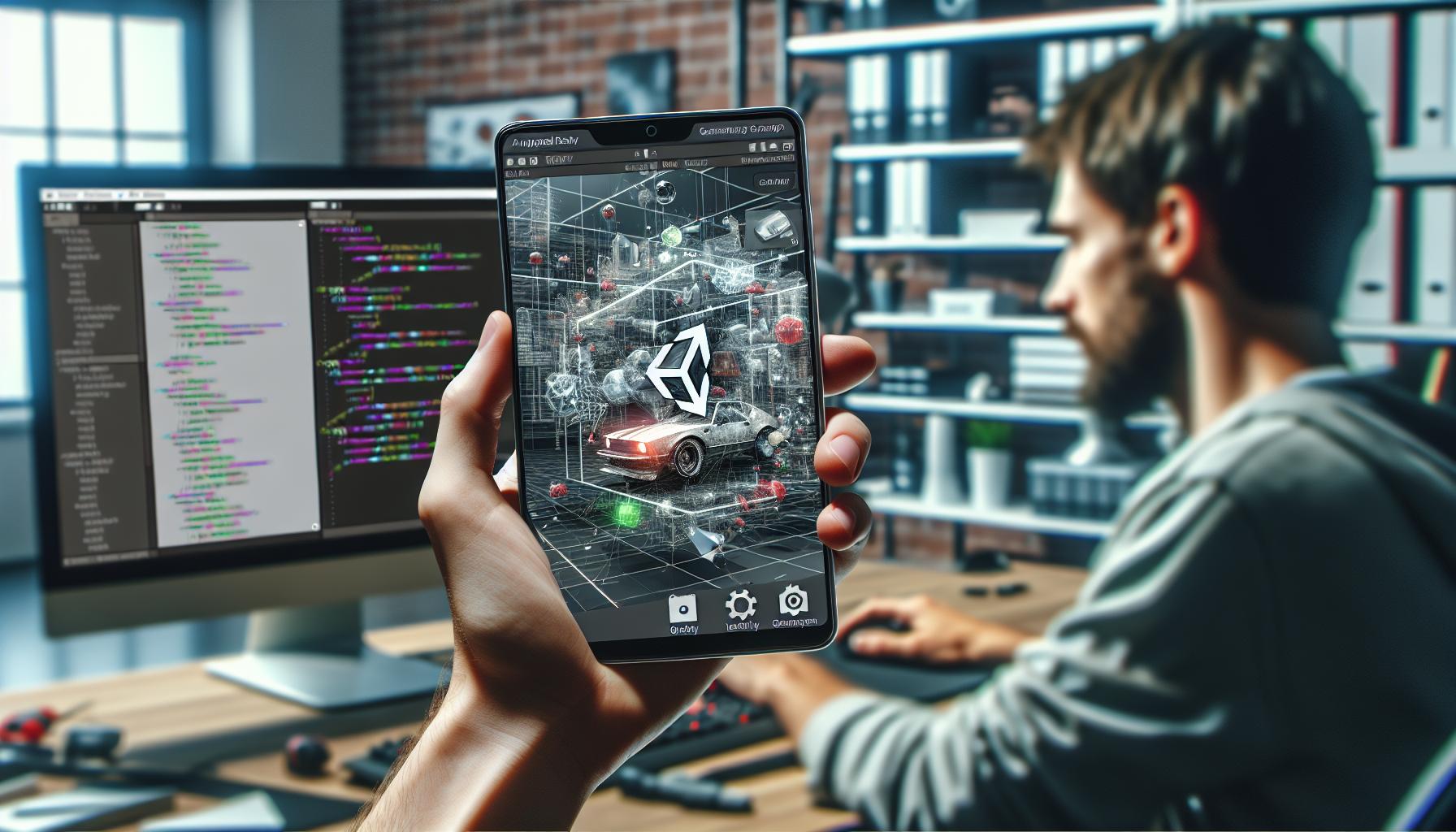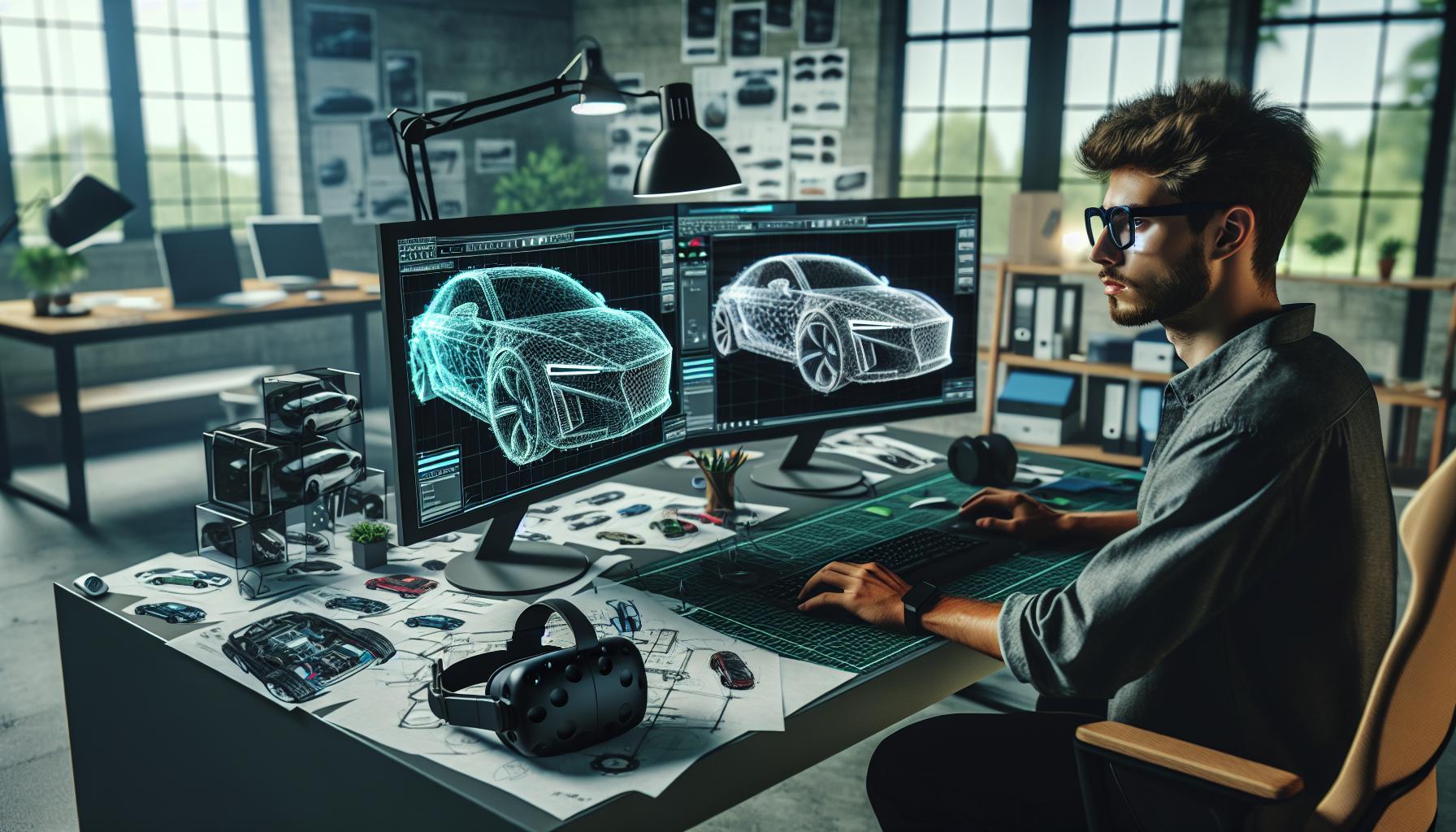In a world where driving a car in augmented reality sounds like a scene from a sci-fi movie, it’s time to buckle up and shift gears into the future. Imagine cruising through your living room or zooming past your kitchen island, all while your friends stare in awe. With ARKit and Unity, this dream can become a reality faster than you can say “vroom vroom.”
Watch Full ARKit and Unity: Build a Drivable Car in Augmented Reality
Augmented Reality (AR) development involves creating interactive experiences that blend digital content with the real world. Developers leverage various tools to design and integrate 3D models, animations, and user interfaces. Notable platforms such as ARKit and Unity play pivotal roles in this field.
ARKit offers powerful capabilities for iOS developers, providing features like surface detection and object anchoring. Developers can create realistic interactions by recognizing real-world surfaces and positioning digital assets accordingly. Unity, on the other hand, serves as a versatile game engine that supports both 2D and 3D content, enabling developers to build engaging AR applications.
Understanding the synergy between ARKit and Unity is crucial for success in AR development. By combining these tools, developers can harness Unity’s rendering power alongside watch full arkit and unity: build a drivable car in augmented reality tracking abilities. This combination leads to immersive experiences where users can drive virtual cars through their physical environments.
Effective AR development also requires attention to user experience. Designers must consider how users interact with virtual elements while maintaining an intuitive interface. Engaging users seamlessly integrates digital components into their surroundings, ensuring fluid navigation and interaction.
Moreover, developers face various challenges in AR development, such as performance optimization and device compatibility. Balancing visual fidelity and performance is essential, especially on mobile devices. Meeting these challenges leads to smoother experiences for users engaging with augmented reality content.
Ultimately, the landscape of AR development continues evolving, driven by advancements in technology and creative innovation. The potential for creating captivating applications grows as developers explore the boundaries of ARKit and Unity.
Introduction to ARKit and Unity

ARKit and Unity together create powerful tools for building augmented reality experiences. Developers leverage these technologies to design and implement engaging applications that blend digital elements with real-world environments.
Key Features of ARKit
ARKit offers advanced capabilities that enhance augmented reality experiences. Its surface detection feature identifies horizontal and vertical planes. Users benefit from motion tracking that allows digital content to respond to real-world movements. Light estimation provides realistic shadows and lighting effects, making virtual objects feel more integrated. Object anchoring ensures stability and accuracy of placed elements. ARKit supports image recognition, enabling the initialization of AR experiences through recognizable images.
Advantages of Using Unity
Unity stands out as a versatile game engine for AR development. It facilitates the creation of both 2D and 3D content, allowing for diverse applications. Real-time rendering capabilities enable developers to visualize changes instantly. Users can implement physics and animations seamlessly, adding a layer of realism. The engine supports cross-platform development, enhancing accessibility. Unity also features a robust asset store, providing access to numerous tools and resources that streamline the development process.
Building a Drivable Car in Augmented Reality

Creating a drivable car in augmented reality (AR) combines innovative technology with user interaction. Developers can harness ARKit and Unity to craft lifelike experiences.
Step-by-Step Development Process
- Set Up Unity Project: Begin with a new Unity project configured for AR. Import ARKit packages and templates to establish the foundation.
- Create Car Model: Design a 3D car model in a suitable format like FBX or OBJ. Ensure the model is optimized for AR to maintain performance.
- Configure AR Session: Set up an AR session in Unity to manage the interaction between virtual elements and the real world. This step includes adding plane detection and lighting adjustments.
- Implement Car Controls: Program input controls for the car, enabling steering, acceleration, and braking. Cover both touch inputs and joystick options for user flexibility.
- Test and Optimize: Conduct thorough testing in various environments. Optimize performance based on user experience, adjusting features like the car’s physics and graphics.
Key Challenges and Solutions
Developers face several challenges while building AR experiences. Performance optimization ranks high; resource-intensive assets can lead to lag. To mitigate this, use compression techniques and level of detail (LOD) for 3D models.
Device compatibility creates additional hurdles; not all devices support the same features. Ensuring compatibility across various platforms and operating systems requires thorough testing. Use conditional scripts to adapt features to the capabilities of different devices.
User interface design remains essential. A cluttered interface can confuse users. Create a clean and intuitive layout that enhances the driving experience while minimizing distractions.
Testing and Optimization

Testing and optimization are critical for achieving a seamless augmented reality experience. Developers must prioritize user satisfaction through various aspects of design and performance.
User Experience Considerations
User experience shapes how users interact with the AR driving experience. Intuitive controls significantly enhance engagement. Clear visual cues indicate important actions, improving user guidance. Feedback mechanisms such as haptic responses can elevate immersion. Additionally, developers should ensure that digital elements blend harmoniously with the physical environment. Testing different user scenarios reveals usability issues and allows for fine-tuning of the interface. Evaluating user feedback directly contributes to refining experience aspects, ensuring a more enjoyable interaction for all users.
Performance Tuning Techniques
Performance tuning yields a smoother and more responsive AR experience. Developers can start by optimizing 3D models to reduce polygon counts. Simplifying textures also helps improve rendering speed. Next, efficient use of lighting techniques minimizes computational load while maintaining visual quality. Implementing frame rate monitoring tools tracks performance metrics throughout development. Ensuring that all assets load asynchronously enhances overall responsiveness. Additionally, employing culling techniques avoids rendering objects outside the user’s view, which saves processing power. These approaches allow for smooth interactions, keeping the driving experience fluid and enjoyable.
Augmented Reality
The journey into augmented reality with ARKit and Unity opens a world of possibilities for developers and users alike. Creating a drivable car in AR not only showcases technical skills but also highlights the innovative potential of blending digital and physical realms. As developers embrace these tools the future of interactive experiences looks bright.
By focusing on user experience and continuous optimization they can overcome challenges and deliver seamless applications that captivate audiences. The excitement surrounding AR technology is just beginning and those willing to explore its depths will undoubtedly lead the charge into a new era of immersive experiences.



